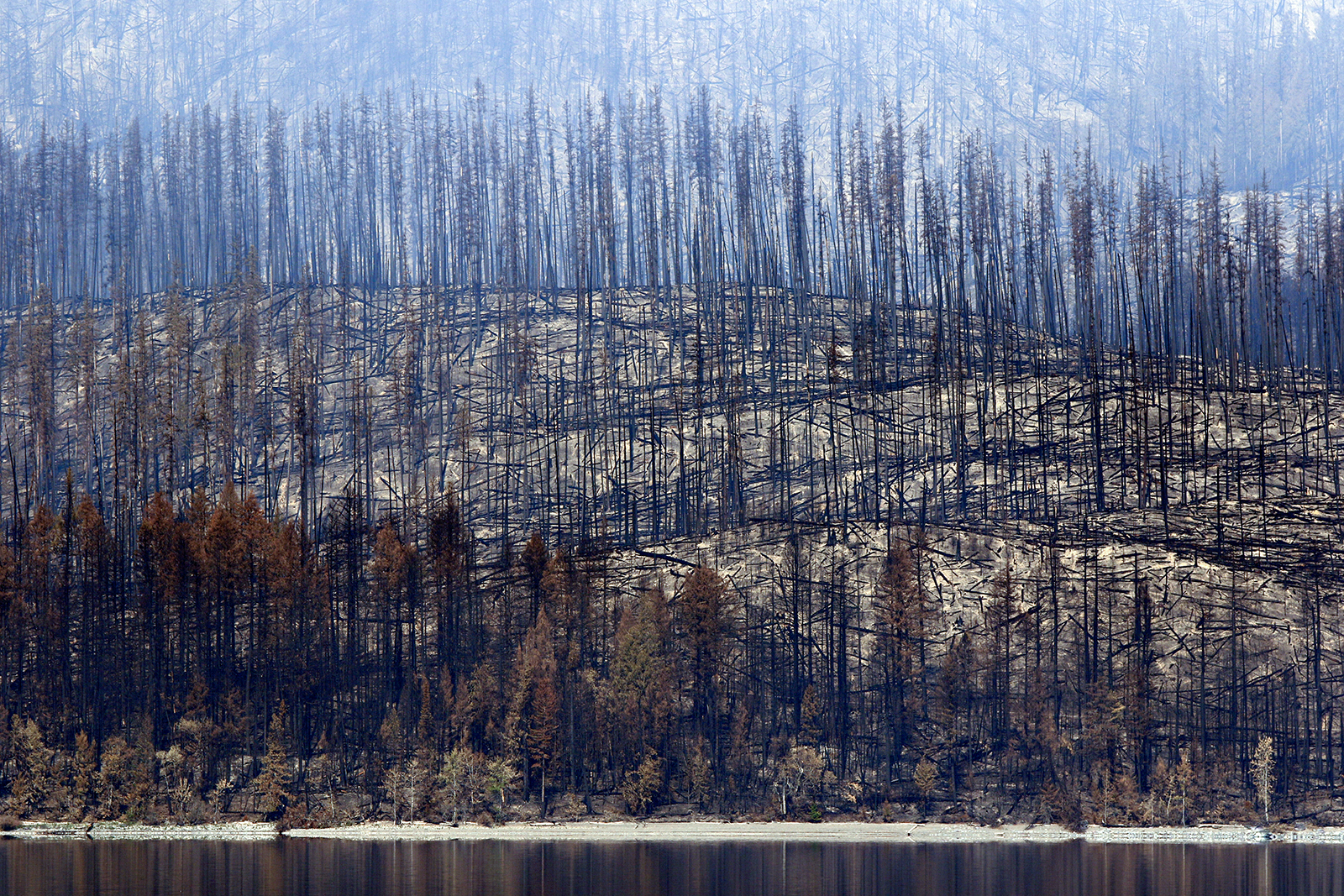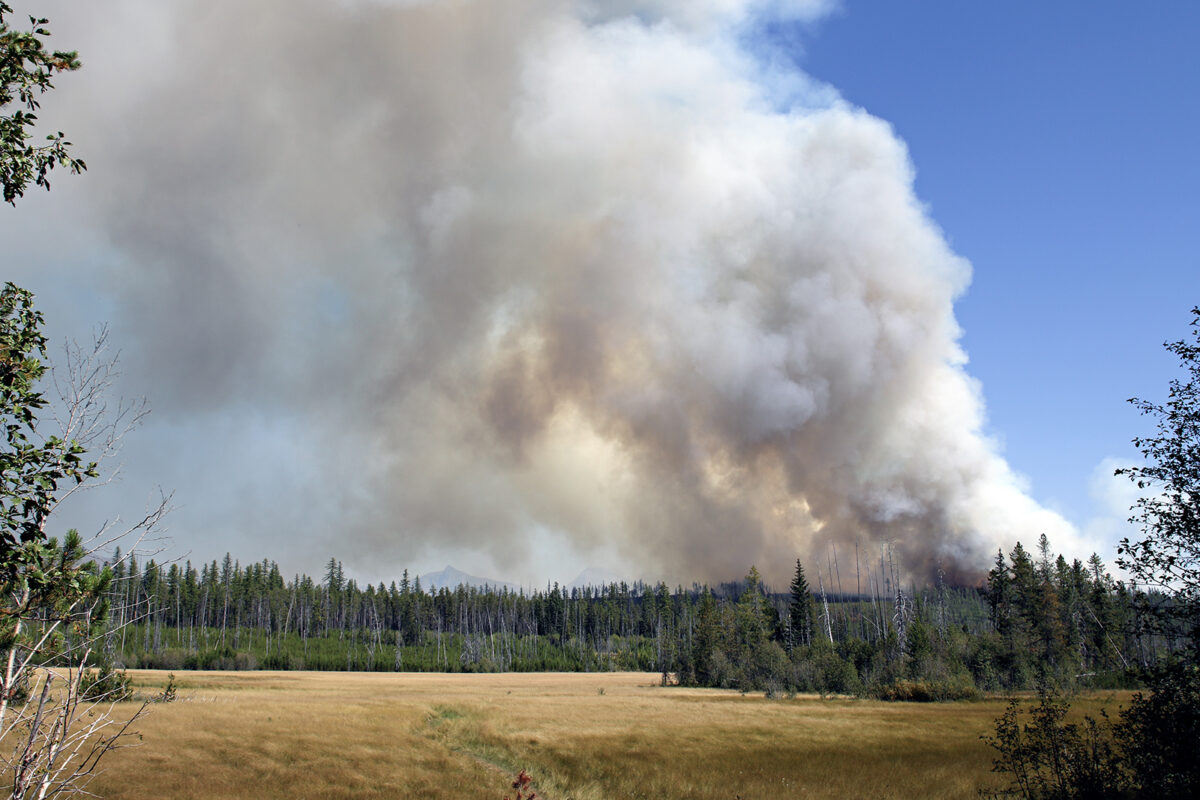Glacier National Park Proposes Updates to 20-year-old Fire Management Plan
Park officials are seeking public input as they prepare an environmental assessment for a long-term fire management plan last updated in 2003; comments will be accepted through March 27
By Tristan Scott
As the severity and frequency of wildland fire increases in the northern Rockies — and as land managers shift away from the outmoded suppression-at-all-cost strategy that dominated fire management throughout much of the 20th century and allow fire to play a more natural role on the landscape — Glacier National Park officials are refreshing a long-term fire management plan (FMP) that was last updated in 2003.
As required by the National Environmental Policy Act (NEPA), the park’s proposed fire mitigation plan must undergo an environmental assessment and public scoping period aimed at evaluating how the plan will affect a 1-million-acre landscape whose ecological health and cultural value has been shaped by centuries of wildland fire.
“An updated FMP is needed to ensure Glacier’s fire management guidelines are consistent with current conditions and the latest [National Park Service] guidance, and to continue to provide for firefighter and public safety, protect park values and resources, and remain consistent with the park’s resource management objectives,” according to the scoping document.
According to the scoping notice released Tuesday, the proposed plan would provide a framework and park-wide guidelines for the management of all wildfires, regardless of cause, size, or complexity. In addition to updating the park’s policy on wildland fire suppression, the plan identifies the use of prescribed fire and non-fire fuels treatments as a way to reduce hazardous fuel loading and protect resources. Above all else, it prioritizes firefighter and public safety, and pledges to consider the ecological benefits of wildland fire in a manner that is consistent with Glacier’s resource management goals.

The environmental assessment identifies two proposed alternatives.
Alternative A proposes actions be taken and is the park’s preferred alternative. Under this alternative, the park would update its fire management plan to “provide comprehensive guidance for wildland fire preparedness and management, the use of prescribed fire and non-fire fuel treatments.”
Alternative B is the no-action plan, which means that the proposed fire mitigation plan would not be implemented, and Glacier’s fire management plan would continue with the current management direction.
“The proposed action is only an initial proposal; no decision to implement any action can be made until the NEPA process, including consideration of reasonable alternatives to the proposed action, is complete.
The NPS requests public feedback on which alternative to implement. There will be a 30-day comment period. Comments can be made on the website and must be received by March 27.
While 2003 will forever be remembered as the year of the Robert fire in Glacier National Park, it also signaled an inflection point for wildland fire management on a national scale as agencies overturned the conventions of fire suppression that characterized fire management tactics for decades.

For an interactive map of Glacier Park’s fire history, visit the fire history page on its website.
Large fires on record with location and acres burned inside park boundaries:
- 1910 – Large fires throughout North Fork area, Firebrand Pass (47,900 acres)
- 1926 – Large fires in North and Middle Fork area (10,500 acres)
- 1929 – Halfmoon Fire burned in Apgar/Middle Fork area (34,400 acres)
- 1936 – Heavens Peak Fire burned over Swiftcurrent Pass (14,142 acres)
- 1967 – Huckleberry and Glacier Wall Fires (6,300 acres)
- 1984 – Napi Point and Crystal Fires (6,500 acres)
- 1988 – Red Bench Fire (22,000 acres in park)
- 1994 – Howling, Anaconda, Adair, and Starvation Fires (16,465 acres)
- 1998 – Kootenai Complex, North Fork Complex (9,411 acres)
- 1999 – Anaconda Fire (10,800 acres)
- 2000 – Parke Peak, Sharon (2,742 acres)
- 2001 – Moose Fire (24,000+ acres in park)
- 2003 – Largest wildfire season in park history, when 13% of the park burned. Read more about the summer of 2003 in the Flathead Beacon’s oral history “Glacier’s Big Burn.”
- 2006 – Red Eagle fire sparked near the head of Read Eagle Lake (24,000 acres)
- 2017 – Sprague Fire (16,982 acres)
- 2018 – Howe Ridge Fire (14,494 acres)